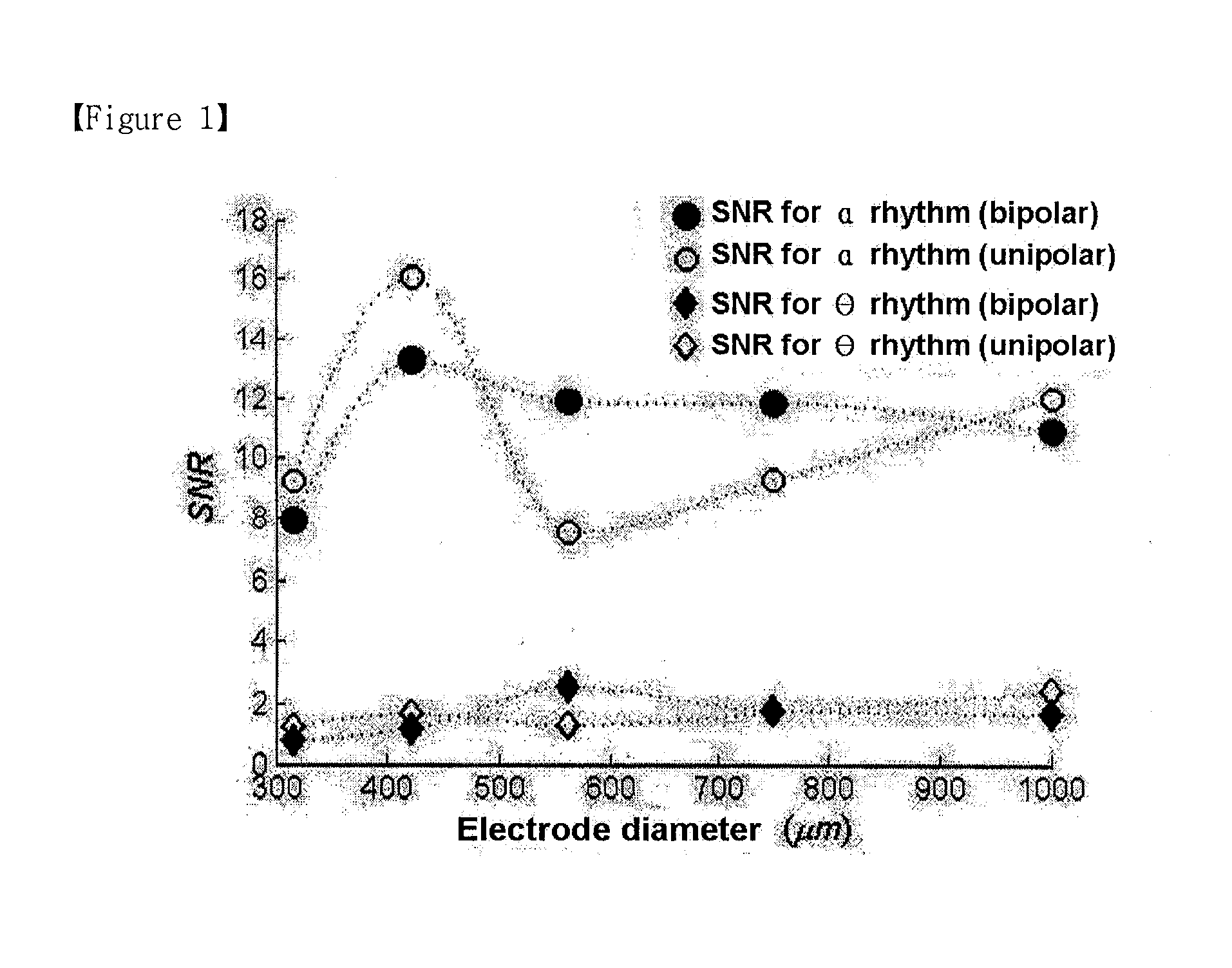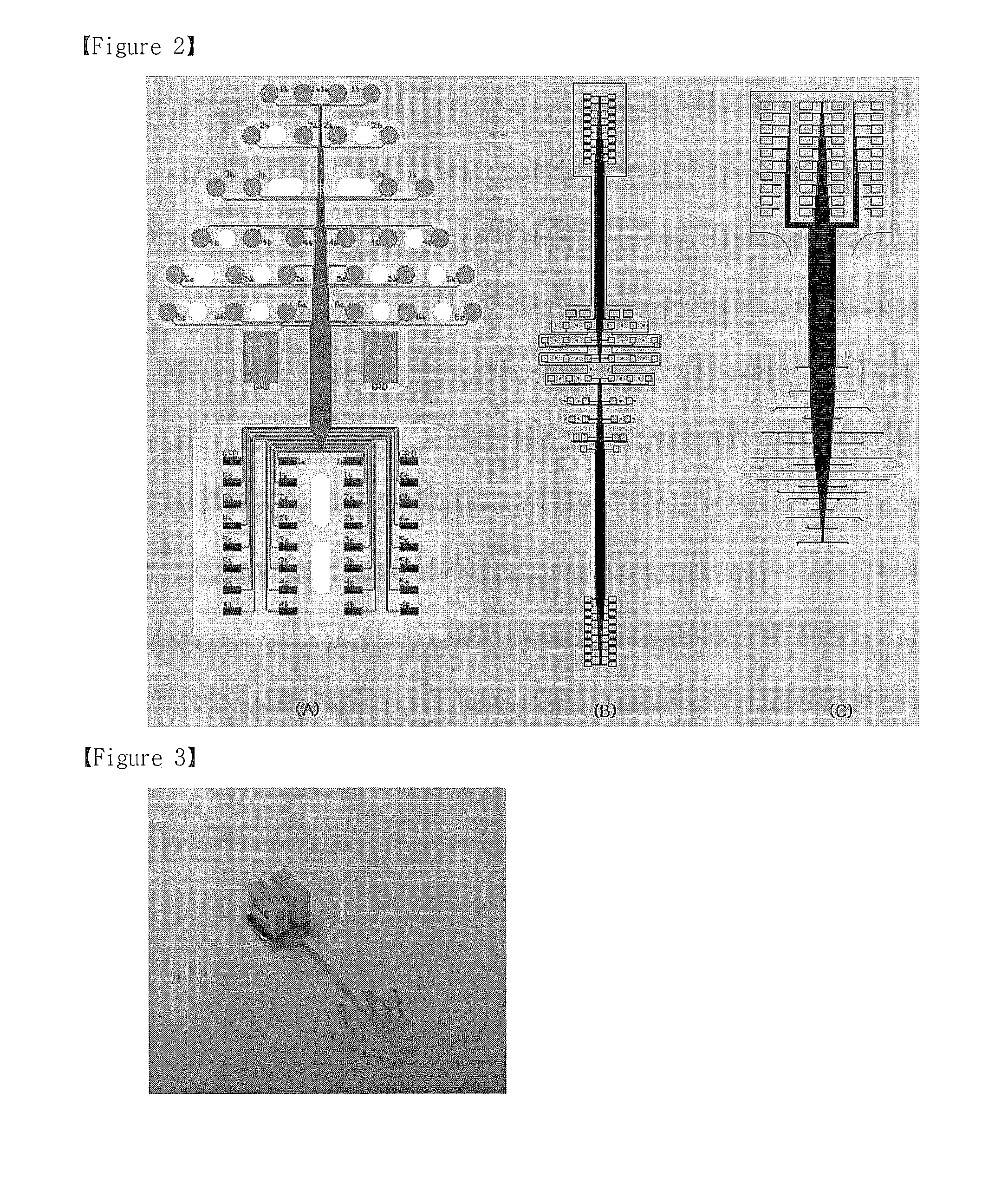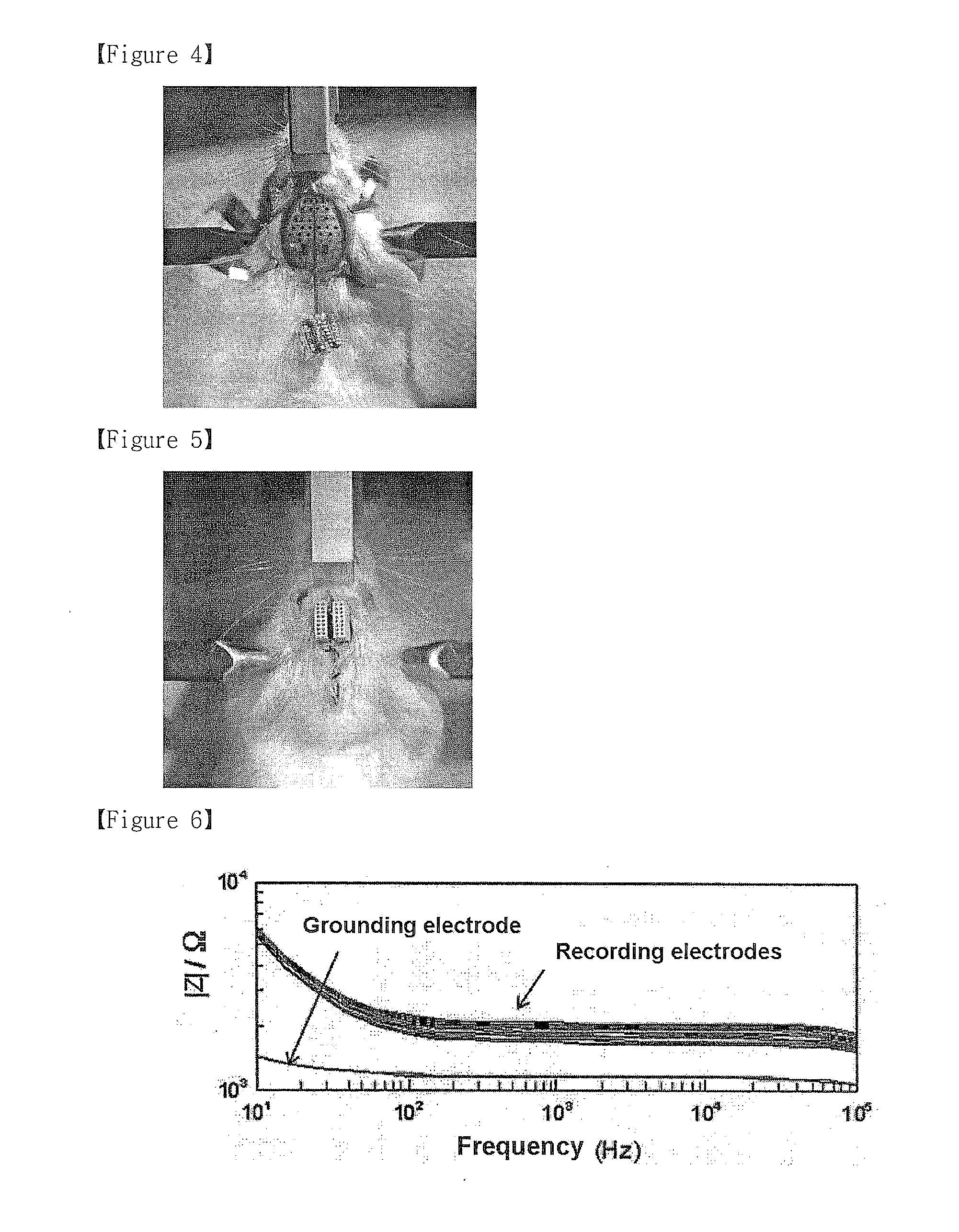Flexible, multi-channel microelectrode for recording laboratory animal eeg and method for recording laboratory animal eeg using the same
- Summary
- Abstract
- Description
- Claims
- Application Information
AI Technical Summary
Benefits of technology
Problems solved by technology
Method used
Image
Examples
Example
EXAMPLE
[0029]1. Design of Microelectrode
[0030]Electrodes for human electroencephalography (EEG) are usually located according to the 10-20 or 10-10 system recommended by the American EEG Society. The electrodes are uniformly positioned on two anatomical landmarks (the nasion and the inion) of the human scalp. Before positioning the electrodes, it is important to remove hair and apply a conductive gel between the electrode and the scalp to make the electrode characteristics uniform.
[0031]For mouse EEG, the electrode may be directly placed on the mouse skull after vertical incision of the scalp. However, the area of the exposed skull is limited. The infratemporal region of the skull is held by a network of muscle tissue transmitting a muscle signal. The surface of a mouse skull has landmarks such as the bregma (the point of meeting of the sagittal and coronal sutures) and the lambda. Traditionally, the bregma is used as a reference point. The distance between the bregma and the lambda...
Example
Test Example 1
Analysis of Electrode Characteristics
[0040]Electrochemical characteristics of the electrode were analyzed using an impedance spectrometer before and after Pt deposition (measurement amplitude: 50 mV; frequency range: 10-105Hz). The measurement was made using a three electrode setup including a Pt counter electrode (PT 1800, Schott Instruments, Mainz, Germany) and an Ag / AgCl reference electrode (B 2920, Schott Instruments, Mainz, Germany). The setup was coupled with an electrochemical interface (1287, Solartron Analytical, Farnborough, UK) and a frequency response analyzer (1255, Solartron Analytical, Farnborough, UK). The measurement was made in a physiological saline solution (0.9%) at room temperature. In order to remove organic residues on the electrode surface and to stabilize the impedance measurement, the electrode was cycled between −0.6 V and +0.9 V (scan rate: 0.1 V / s) prior to the analysis.
[0041]
[0042]FIG. 6 shows absolute value of impedance |Z| (Ω) and FIG. ...
Example
Test Example 2
In Vivo Test
[0043]Mouse EEG was recorded in vivo using an electrode according to an embodiment of this disclosure.
[0044]2-1. Comparison of EEG Signals from Existing Screw Electrode and Microelectrode According to the Disclosure
[0045]EEG signals from an existing screw electrode and a microelectrode according to an embodiment of this disclosure were compared at the same time. A mouse (8 weeks old, body weight 25 g) was anesthetized with Avertin (2% 20 μl / g, 20 mL / body weight kg) and placed on a stereotaxic apparatus (an apparatus used to examine the brain 3-dimensionally for brain surgery or study) (David Kopf Instruments, Model 902, Calif., USA). After incising an area of 2.0×2.5 cm with respect to the midline, the scalp was opened and fixed with a micro clamp. The skull was perforated and a screw electrode was implanted on the scalp (anteroposterior (AP): +2.5 mm, mediolateral (L): +2.5 mm). A pair of contacts of a microelectrode were positioned to be symmetric to each...
PUM
 Login to View More
Login to View More Abstract
Description
Claims
Application Information
 Login to View More
Login to View More - R&D
- Intellectual Property
- Life Sciences
- Materials
- Tech Scout
- Unparalleled Data Quality
- Higher Quality Content
- 60% Fewer Hallucinations
Browse by: Latest US Patents, China's latest patents, Technical Efficacy Thesaurus, Application Domain, Technology Topic, Popular Technical Reports.
© 2025 PatSnap. All rights reserved.Legal|Privacy policy|Modern Slavery Act Transparency Statement|Sitemap|About US| Contact US: help@patsnap.com



